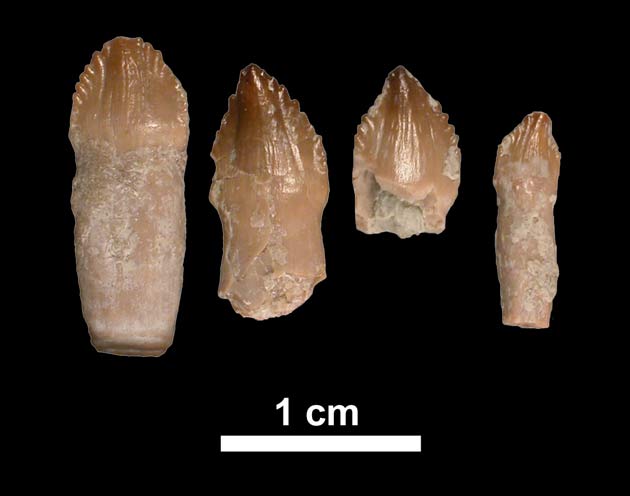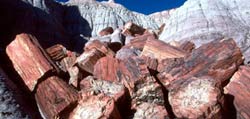Oops! Dinosaur Teeth Sales are a Croc

One of the more common types of fossilized bone sold as dinosaur teeth turn out to be from ancient crocodiles, scientists said today.
The claim, if accurate, would force a rethinking of dinosaur evolution.
The creature, known previously only from its teeth, is called Revueltosaurus callenderi. It lived 210 million years ago in the Triassic Period and was thought to be an ancestor of the plant-eating ornithischian dinosaurs like Stegosaurus and Triceratops, which lived millions of years later in the Jurassic and Cretaceous periods.
The teeth can be found for sale on the Internet for as little as $20.
Not what they seem
Last year, researchers uncovered a more complete Revueltosaurus skeleton at the Petrified Forest National Park in Arizona.
"Because the teeth look like those we know from herbivorous ornithischians, people assigned them to the dinosaurs," said Randall Irmis, a graduate student in the Department of Integrative Biology and the Museum of Paleontology at UC Berkeley. "We think we've shown that you can't rely on the dentition to determine what is an early dinosaur, which casts doubt on all the ornithischians from the Triassic of North America."
Sign up for the Live Science daily newsletter now
Get the world’s most fascinating discoveries delivered straight to your inbox.
The identity of other presumed dinosaur ancestors known only from teeth, including all Late Triassic ornithischians outside South America, should now be questioned, Irmis and his colleagues say.
Tyrannosaurus rex and other meat-eating theropods, along with the herbivorous ornithischians, did not evolve together in the Late Triassic as many paleontologists thought, the results suggest. Instead, theropods must have been well established globally before the ornithischians spread out into what are now North America, Europe and Africa.
Developing theropods probably saw Revueltosaurus as dinner.
Revising history
"We have pretty much erased the record of Triassic ornithischian dinosaurs from North America, Europe and worldwide, except for South America," said the fossil's discoverer, park paleontologist William Parker. "Even the fossils in South America aren't very well preserved, and people argue whether they're dinosaurian as well. If the South American animals are indeed ornithischians, then it argues that the group possibly arose there."
The study was reported in the May issue of the journal Proceedings of the Royal Society, Biological Sciences, but has not been widely noticed.
Revueltosaurus was named in 1989 from teeth found in Revuelto Creek, New Mexico, by Adrian Hunt. The newfound full skeleton shows the teeth are not of a plant-eating dinosaur, but of a crocodilian ancestor that ate plants and perhaps animals.
"This find is a great thing for the crocodilian record, too," Parker said. "Here's this totally unrecognized group of possibly herbivorous crocodilians," Parker said.
The similarities are a result of what scientists call convergent evolution, when unrelated species develop similar traits independently.
Related Stories
- Avian Ancestors: Dinosaurs that Learned to Fly
- Birds of Prey: Spot Today's Dinosaurs
- A Similar Croc Case in Brazil
Frozen in Time

The Petrified National Forest.
Credit: NPS
Robert is an independent health and science journalist and writer based in Phoenix, Arizona. He is a former editor-in-chief of Live Science with over 20 years of experience as a reporter and editor. He has worked on websites such as Space.com and Tom's Guide, and is a contributor on Medium, covering how we age and how to optimize the mind and body through time. He has a journalism degree from Humboldt State University in California.











